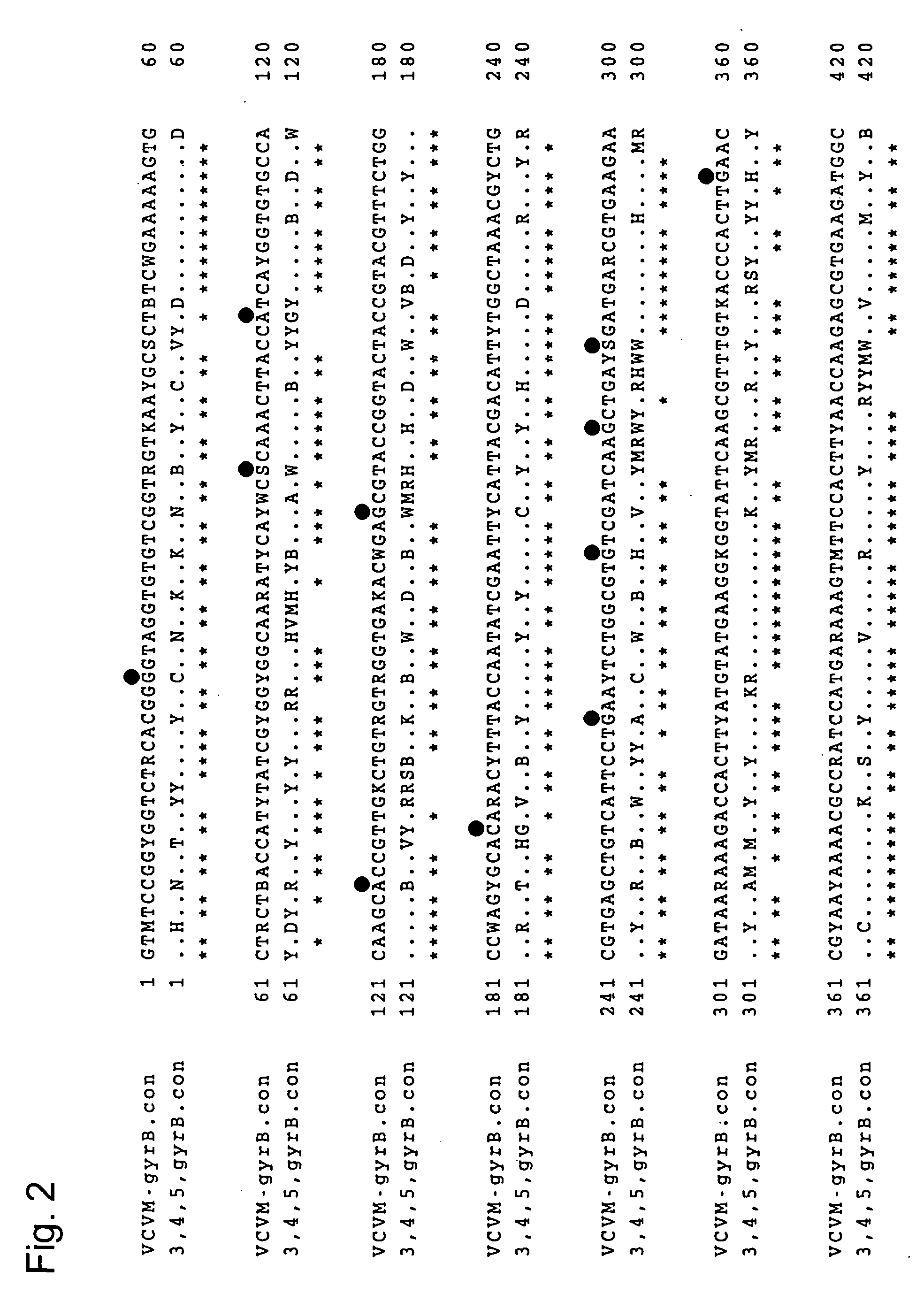Primer and probe for detecting vibrio cholerae or vibrio mimicus and detection method using the same
a technology of vibrio cholerae and probes, which is applied in the field of primers and probes for detecting vibrio cholerae or vibrio mimicus, can solve the problems of inability to detect the strain to be detected with high accuracy, existing genetic detection methods, and inability to detect high-precision strains, etc., and achieve excellent amplification efficiency and high specificity. , the effect of high specificity
- Summary
- Abstract
- Description
- Claims
- Application Information
AI Technical Summary
Benefits of technology
Problems solved by technology
Method used
Image
Examples
example 1
[0038] An example of using gene amplification primers (shown in Table 2) designed and obtained according to the present invention using regions specific to Vibrio cholerae and mimicus is shown. In addition, primers described in claim 5 (2) and (3) and claim 11 (2) and (7) correspond to CMgF, CMgR, CMrF, and CMrR in Table 2, respectively. PCR was carried out using chromosomal DNAs as templates extracted from test strains, AmpliTaq Gold (PE Applied Biosystems), and a total of 20 μl of reaction solution. Regarding thermal cycler conditions, after 10 minutes of heating at 95° C., 35 cycles of 94° C. for 1 minute, 1 minute of annealing (see Table 5 for annealing temperatures), and 72° C. for 1 minute were conducted, finally followed by 10 minutes of elongation reaction at 72° C. Samples obtained after reaction were subjected to 1% agarose gel electrophoresis, and then stained with ethidium bromide. The presence or the absence of amplified genes was confirmed under UV irradiation. Amplifi...
example 2
[0039] An example of using gene amplification primers (shown in Table 3 and Table 4) designed and obtained according to the present invention using regions specific to Vibrio cholerae or mimicus is shown. In addition, primers described in claim 19 (1), (3), (4), and (5) and claim 25 (1) and (14) are specific to Vibrio cholera. These primers are described in CF1, CF2, CR2, CR1, CrF1, and CrR1 in Table 3. Primers described in claim 33 (1), (3), (4), and (5) and claim 39 (7) and (13) are specific to Vibrio mimicus. These primers correspond to MF1, MF2, MR2, MR1, MrF1, and MrR1 in Table 4, respectively.
[0040] In a manner similar to Example 1, PCR was carried out using as templates chromosomal DNAs extracted from test strains (see Table 5 for annealing temperatures). In all cases, the use of Vibrio cholera-specific primers resulted in detection of amplification products only from Vibrio cholera and the use of Vibrio mimicus-specific primers resulted in detection of amplification product...
PUM
| Property | Measurement | Unit |
|---|---|---|
| temperatures | aaaaa | aaaaa |
| temperatures | aaaaa | aaaaa |
| temperatures | aaaaa | aaaaa |
Abstract
Description
Claims
Application Information
 Login to View More
Login to View More - R&D
- Intellectual Property
- Life Sciences
- Materials
- Tech Scout
- Unparalleled Data Quality
- Higher Quality Content
- 60% Fewer Hallucinations
Browse by: Latest US Patents, China's latest patents, Technical Efficacy Thesaurus, Application Domain, Technology Topic, Popular Technical Reports.
© 2025 PatSnap. All rights reserved.Legal|Privacy policy|Modern Slavery Act Transparency Statement|Sitemap|About US| Contact US: help@patsnap.com



